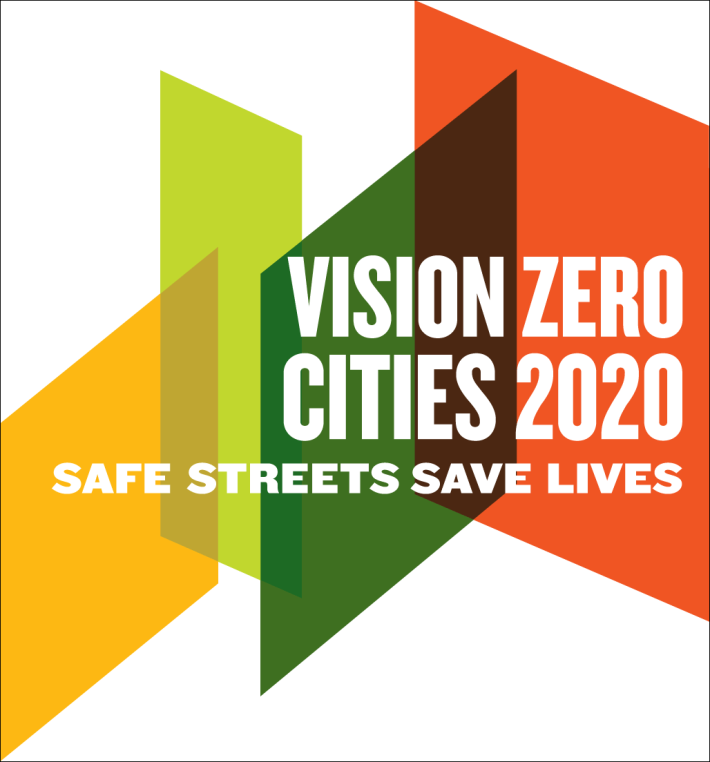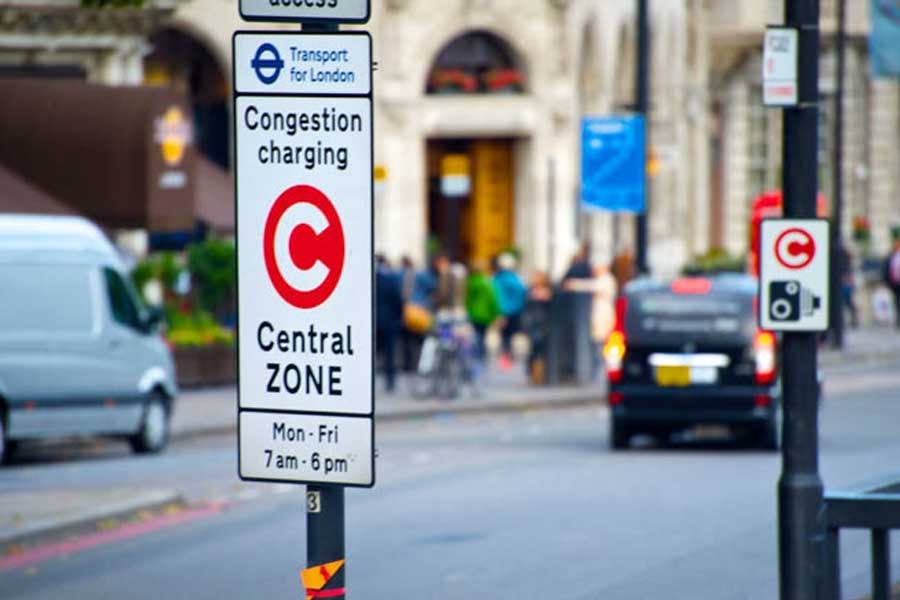This article will appear in Transportation Alternatives' Vision Zero Cities Journal as part of the 2020 Vision Zero Cities Conference, Oct. 19-23. You can still register for the conference at visionzerocities.org.
Traffic congestion in urban areas generates a wide range of negative outcomes for society. The economics of these problems are well understood — the use of urban roads and urban space is essentially free, or at least too cheap, for automotive use. Individual drivers may face some minor costs in using urban areas, but these typically do not include the social costs associated with, for instance, pollution, traffic crashes, or congestion. One remedy is simply to introduce some form of additional charge for usage — often known as congestion pricing, a congestion charge, or a congestion toll.

In theory, an “optimal” charge would vary by the extent to which any individual or vehicle generates negative societal costs. In practice, congestion charges are less subtle. For example, in London when a congestion charge was introduced in 2003, the cost was a flat fee of £5 per entry to a specified area of central London within the hours of 7 a.m. to 6:30 p.m. Other subsequent congestion charges have slightly more complex pricing schemes, for instance the congestion charge in Milan has a degree of variable pricing across different emission classes of vehicles.
While these charges have been now introduced in several cities, including London, Milan, and Stockholm, and remain in place, congestion tolls have faced resistance in a range of other cities. In the UK alone, Manchester and Edinburgh have rejected their proposed introduction. One argument used against congestion tolls in these cities is that, by increasing road speeds in urban areas by reducing the number of cars on the road, congestion tolls make these areas less safe, particularly for pedestrians and cyclists. Those opposed to these schemes point to the apparent increase in deaths of cyclists that occurred in London after the charge was introduced. These deaths have been the focus of much media attention in the UK.
But how congestion charging influences traffic crashes and related injuries and fatalities is, at least theoretically, not so simple. If the charge is successful in reducing congestion, and the evidence is that they are, fewer cars leads to an expectation of fewer traffic crashes. At the same time, reduced congestion means higher travel speeds. For example, prior to the introduction of the congestion charge in London, average vehicle speeds were just 8.6 miles per hour, and one-third of vehicle travel time during prime hours was spent simply not moving. Speed increases the chance of a crash and increases the severity of crashes that do occur This may be particularly dangerous in dense urban areas where cars, cyclists, and pedestrians share space. It was these issues that my research, joint with John Heywood of the University of Wisconsin at Milwaukee and Maria Navarro of Lancaster University, sought to examine, focusing on London.
The "missing counterfactual" problem becomes critical in addressing these issues — we simply don’t know what would have happened to crashes in the London congestion zone if a charge had not been introduced. For example, simply comparing crash statistics before and after the introduction of the charge is not informative. We may simply observe something that would have happened even without the charge, especially given, as in many countries, the number of traffic crashes has been steadily declining across the UK over time.
To address this, we used the most populous 20 cities in Britain, not including London, as comparison cities where the key advantage is that this same downward trend in crashes is also present. Our main finding was that introducing the congestion charge led to a substantial, in the order of 40 percent, reduction in traffic crashes in Central London. Traffic crashes that result in individuals being killed or seriously injured (KSIs) also fell, by just under four a month, or 45 a year. Thus, in addition to saved travel time, the congestion charge reduced crashes and lives.
This reduction did not just reflect less traffic, because in theory a high enough charge could eliminate traffic crashes — the risk of a crash per mile driven also decreased markedly. It is also worth noting that it was not the case that the congestion charge pushed the problem elsewhere, either to other areas or outside of times. Crashes and fatalities fell in both surrounding areas, and outside of congestion charging times. Since its introduction, the initial charge has risen a number of times, and the evidence is that these rises led to further reductions in crashes. In sum, the introduction of the charge made roads safer both within the charging zone, but throughout London. Putting a price on driving appears to make streets safer.
What about the concern regarding traffic speed, pedestrians and cyclists? Bicycles, and the death of cyclists have, in particular, been used as an argument against congestion charging.
Here, too, the evidence points to the congestion charge delivering safety. The charge did lead to a marked increase in cycling into and around central London. This is not surprising; cycling was encouraged as alternative transport. This happened at the same time that motor vehicle traffic speeds increased. There is also no evidence that spikes in crashes involving cyclists happened after the charge was introduced. Roughly one and a half more cycling crashes a month in central London were reported to the police after the charge. There are, however, two points to note. The first is that the increase in crashes reflected an even larger increase in the amount of cycling occurring within central London. So much so, that the rate of crashes, in fact, fell. Cycling became safer after the charge. Second, this increase in crashes did not persist. It appears that an initial response to the congestion charge was that more inexperienced cyclists took to the roads. In time, they either changed their commuting mode or gained experience cycling in these areas. This latter point undoubtedly has important implications for policies that, for instance, aim to shift people’s commuting methods towards cycling.
What do we learn from this experience? Policies that price the use of urban roads, in addition to their beneficial effects on congestion, can make these roads and urban areas safer for all users, although some caution is needed when trying to push people towards greater cycling. Simply put, traffic safety is not a (good) reason to oppose the introduction of pricing schemes. With traffic volumes now substantially lower in many cities due to COVID-19 measures, this could represent an opportunity to introduce these types of congestion charging schemes. Doing so might cause less dramatic disruption and yet set the stage for safer roads when traffic volumes eventually rebound.
Colin Green is Professor of Economics at the Norwegian University of Science and Technology. A focus of his research is the economics of public policy.






